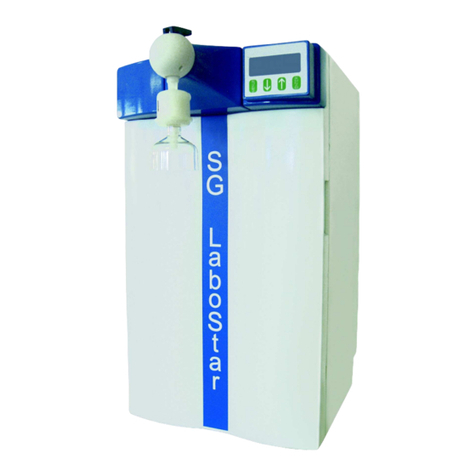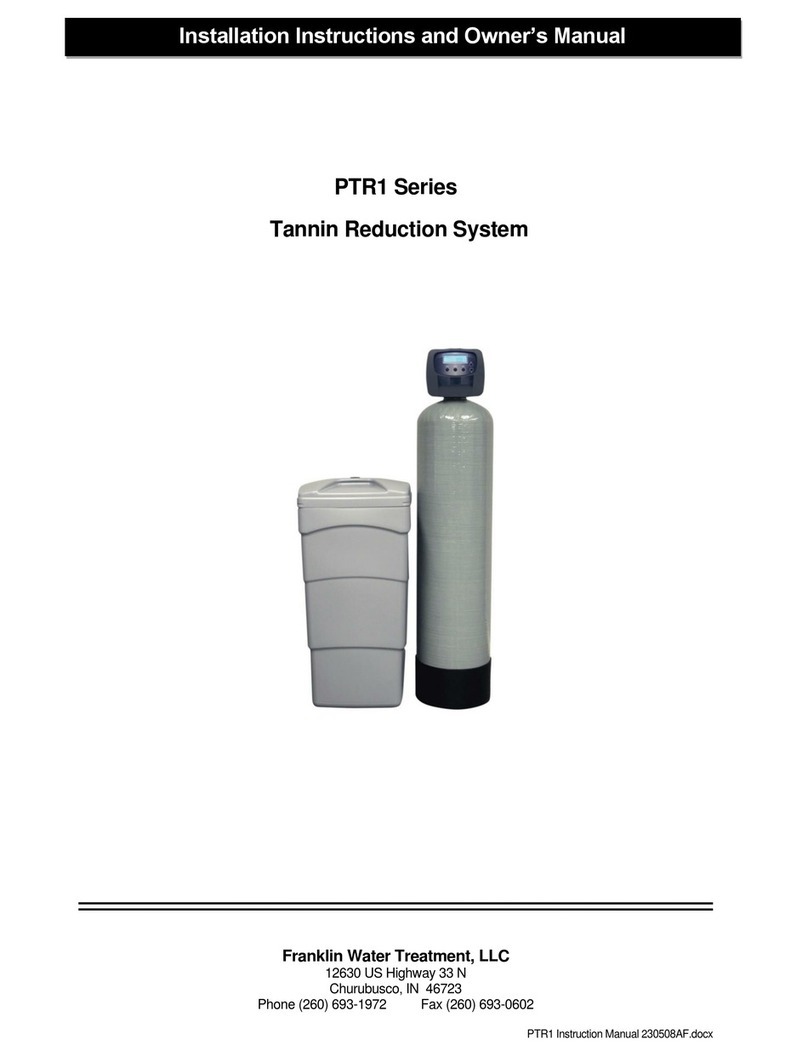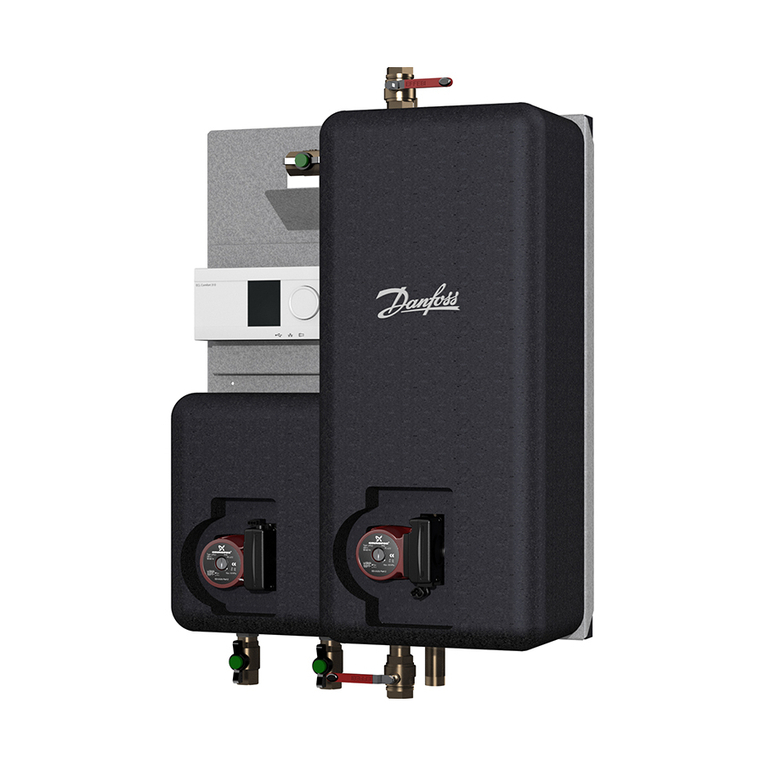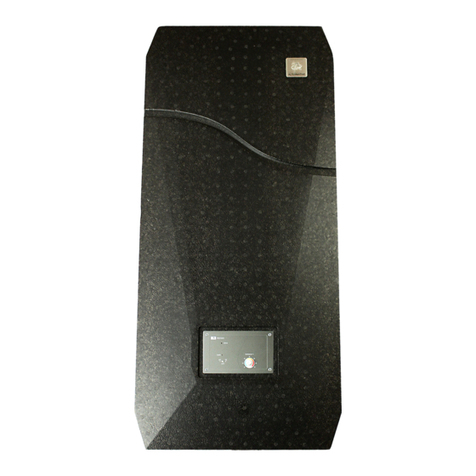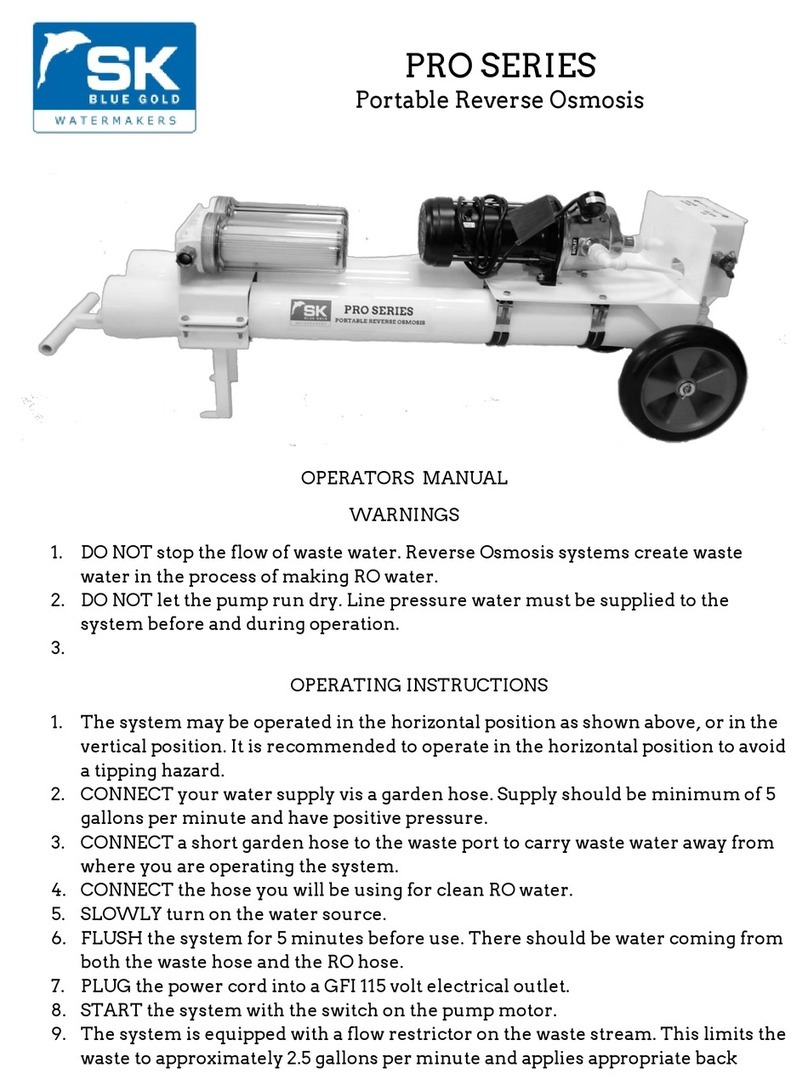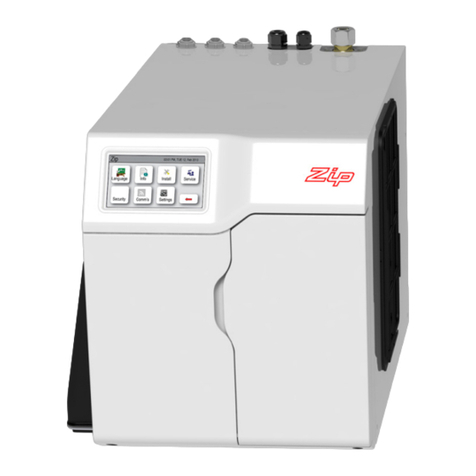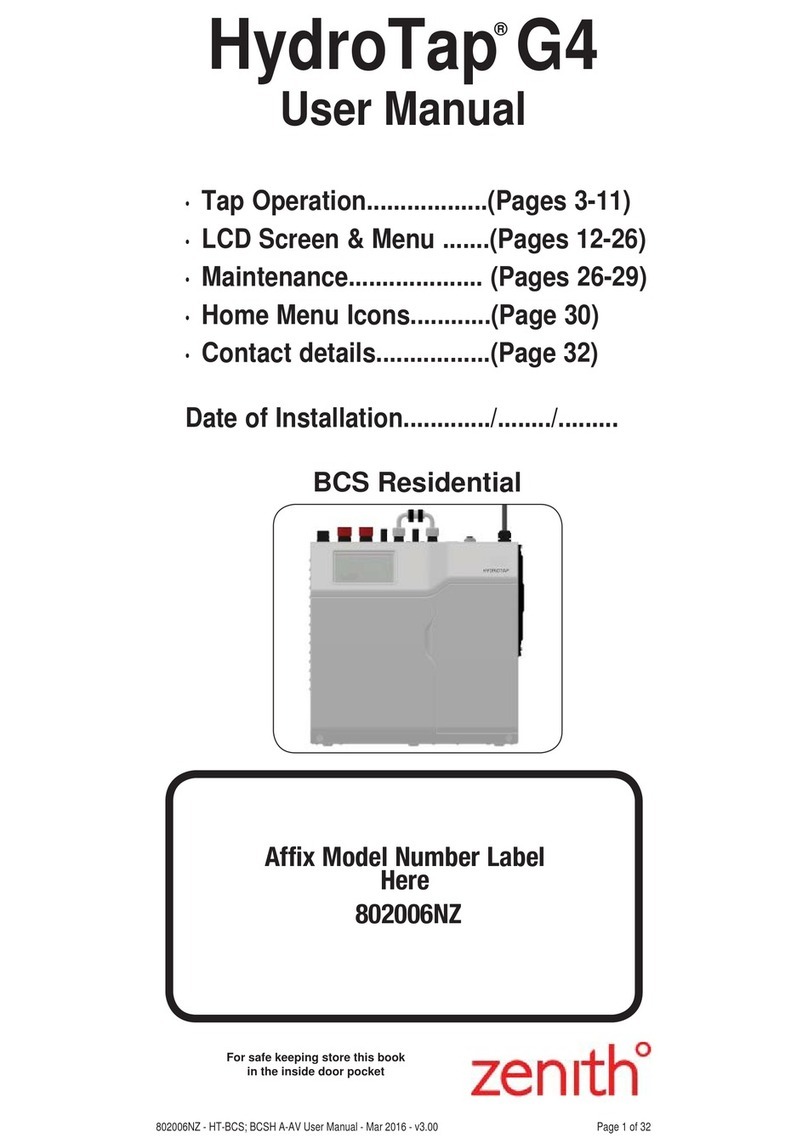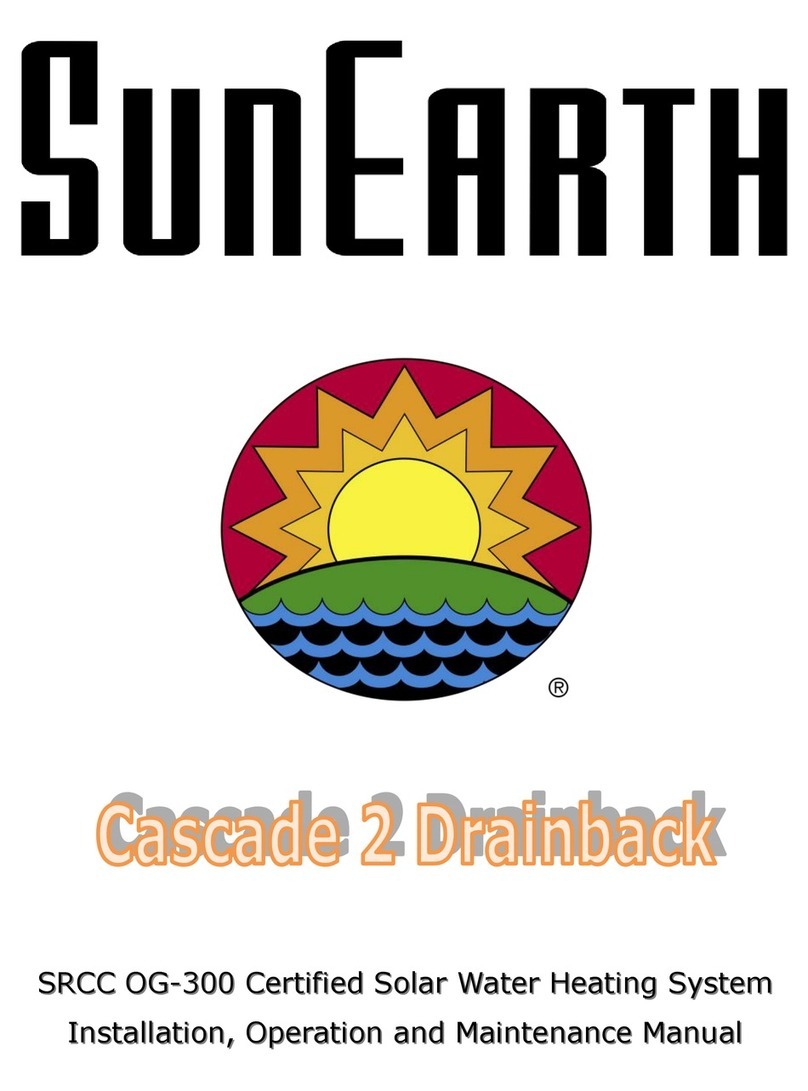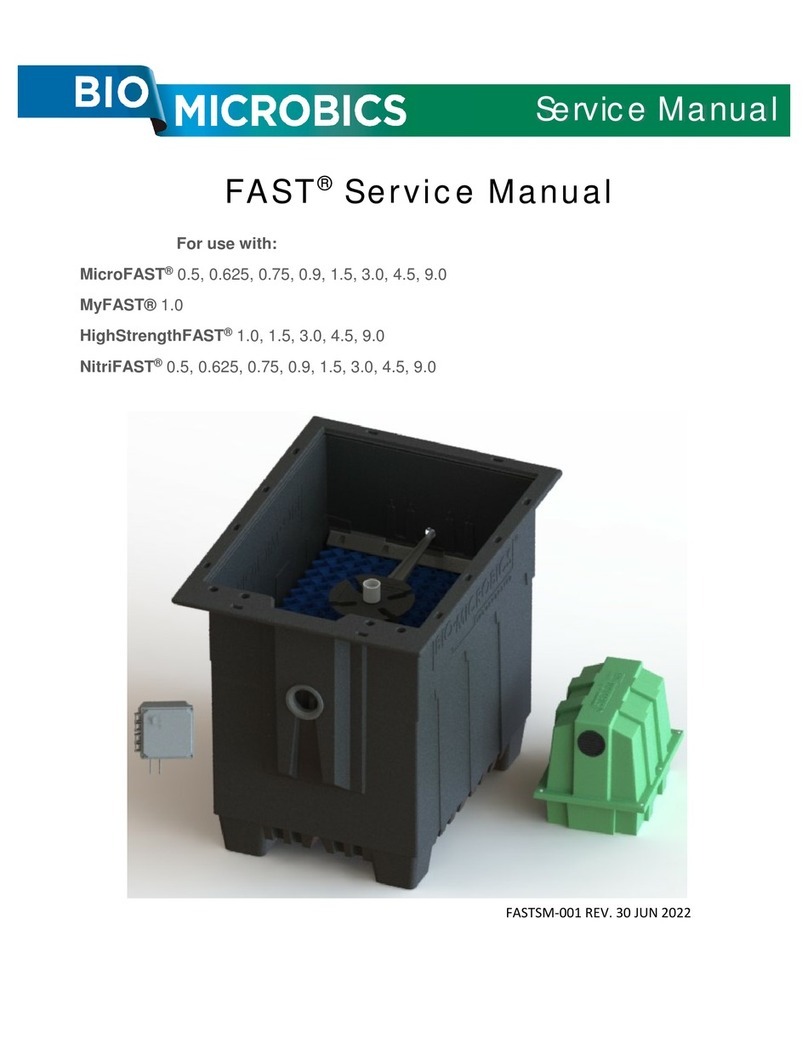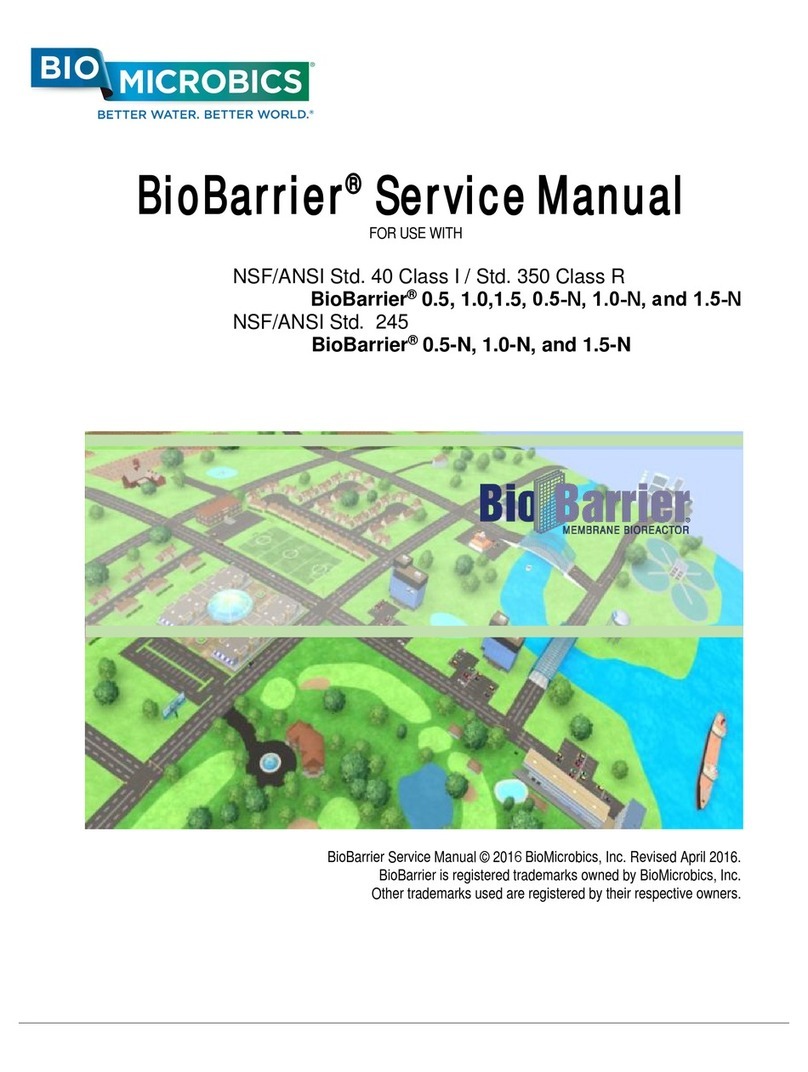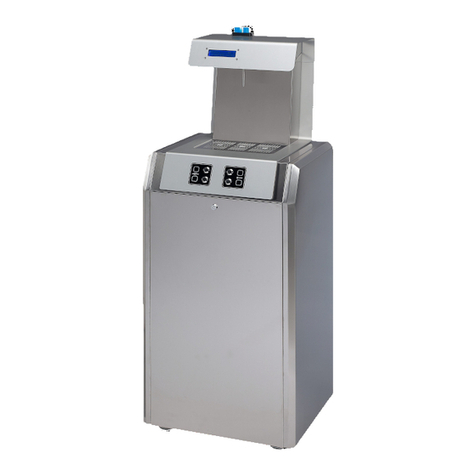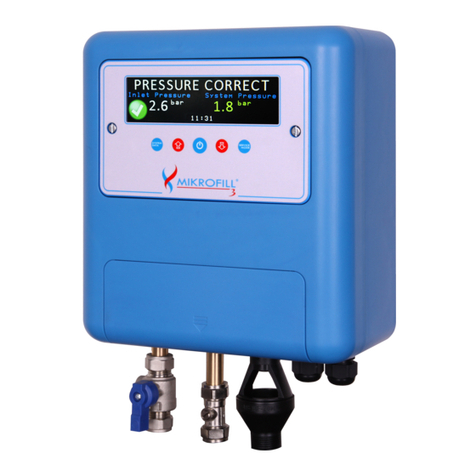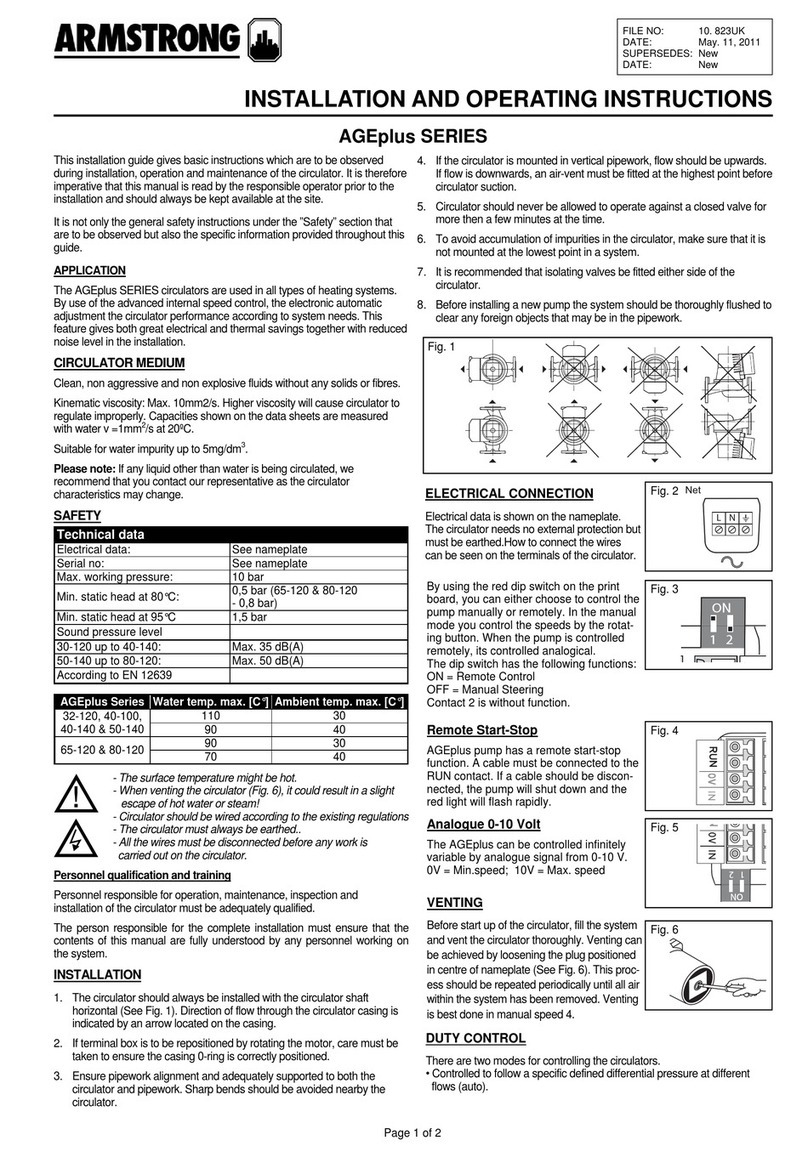
Electrical - Controls
19
Tranquility®High Temperature Water-to-Water (THW) Series
Rev.: 28 Aug., 2014
climatemaster.com
Warm weather shutdown (WWSD): Radiant floor systems are
the most comfortable type of heating available today. However,
they do have one disadvantage – quickly switching from
heating to cooling is not possible due to the mass heat storage
in the slab. For example, in the spring or fall, there could be
times where heating is required at night, but cooling is required
during the day. With a warm floor, the cooling system has
to work much harder to cool the space. WWSD shuts down
the water-to-water heat pump at a pre-determined outdoor
air temperature (adjustable at the user interface). When a
water-to-air heat pump is used for space cooling, this unit can
be enabled when WWSD is activate, allowing the water-to-air
heat pump to heat via forced air during the shoulder seasons,
avoiding the warm slab/cooling dilemma (see cooling enable,
below). A normally closed contact is provided in the THW
unit to de-energize the heating system controls (e.g. radiant
floor control panel) during WWSD. WWSD does not affect
DHW heating. In other words, the water-to-water unit can still
operate for generating DHW, even if the heating distribution
(e.g. radiant floor) system is disabled.
The WWSD activation (i.e. when the WWSD feature is
enabled) outdoor air temperature range is 40-100°F [4-38°C]
with a default value of 70°F [21°C]. The WWSD deactivation
(i.e. when the radiant heating returns to operating mode)
temperature range is 35-95°F [2-35°C] with a default value
of 65°F [18°C] and a minimum difference between activation
and deactivation temperatures of 5°F [3°C]. If the outdoor air
temperature (OAT) rises above the activation temperature, the
cooling enable signal (see below) is enabled, and the control
no longer controls the buffer tank temperature. If the OAT
falls below the deactivation temperature, the control resumes
monitoring the buffer tank temperature.
Cooling enable: Cooling enable is tied to the WWSD feature.
If desired, the water-to-air unit controls can be wired to the
THW unit controls, which will allow the water-to-air unit to
operate during WWSD, but will disable the water-to-air unit
when the THW unit is not in WWSD mode. When a heat
pump thermostat is connected to the water-to-air unit, forced
air heating may be used for the shoulder seasons, allowing
quick heating to cooling changeover. If this feature is used,
the consumer will easily be able to tell when WWSD is enabled
because the water-to-air unit thermostat will only be active
during WWSD. Otherwise, the water-to-air unit thermostat will
be disabled, indicating that the consumer should utilize the
hydronic heating (e.g. radiant floor) thermostat.
Second stage heating (backup boiler): Optimal heat pump
sizing may not include a water-to-water heat pump that can
handle 100% of the heating load. When a backup boiler is
used to supplement the heating capacity, a 24VAC output
from the THW unit can energize the boiler. The boiler control
box simply needs a relay that can be used to interface with
the THW unit.
DHW priority: By default, DHW heating always takes priority
over space heating. Normally, the hot water load will be
satisfied quickly, and the unit can then switch back to space
heating.
Time schedule: DHW temperatures may be adjusted
during occupied/unoccupied times via the user interface to
save energy costs.
Vacation mode: DHW generation may be disabled when the
user interface is placed in vacation mode. A return date and
time may be set to restore normal DHW temperatures.
Emergency DHW generation: If the THW unit is locked out, a
24VAC signal can be sent to a contactor at the water heater
to allow the operation of the electric elements and associated
thermostat.
Enhanced heat pump lockouts: Like any ClimateMaster
unit, the CXM board locks out the compressor any time a
lockout condition occurs. The MPC reads the lockouts from
the CXM, and reports the condition to the user interface.
The user interface changes from a blue backlight to a red
backlight, indicating a lockout. The actual lockout is reported
(e.g. High Pressure) at the interface. In addition to the
standard CXM faults, the MPC checks for bad thermistors
and high compressor discharge temperature, which are also
reported at the user interface.
Pump control: If the optional load and source pump(s) are
selected, the control energizes the pumps any time the
compressor is operating.
Variable speed floor pump (VSFP) output: Some radiant floor
systems utilize a variable speed pump on the floor system,
which changes flow based upon the number of zones open
or closed. Since the pump has built-in controls, only a power
supply is needed. An optional power terminal is available for
VSFP applications.




















